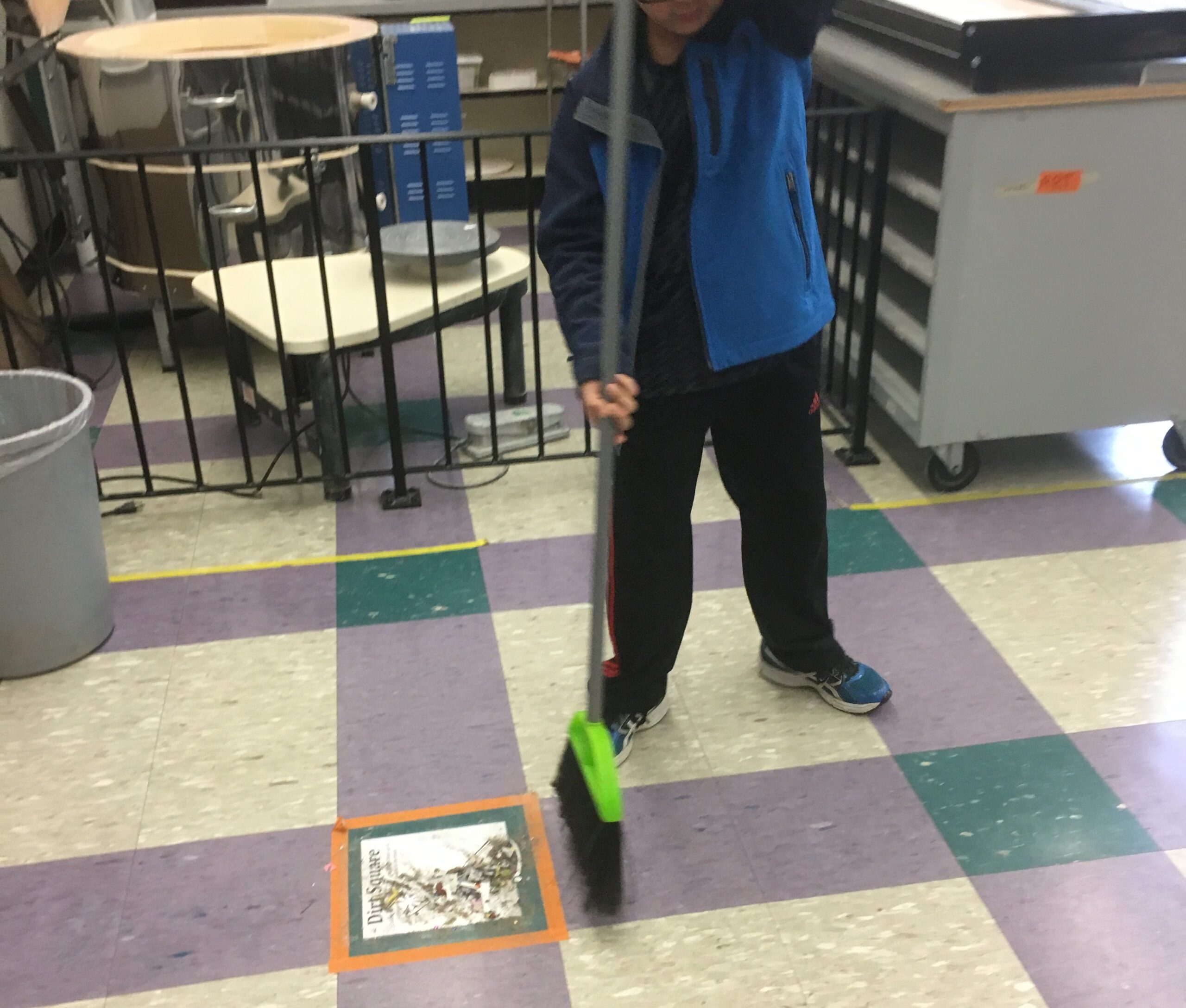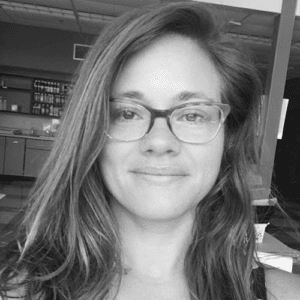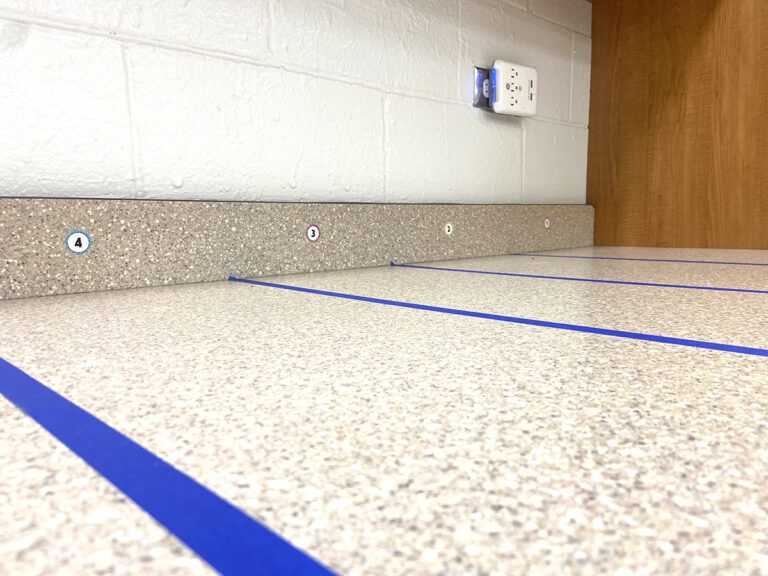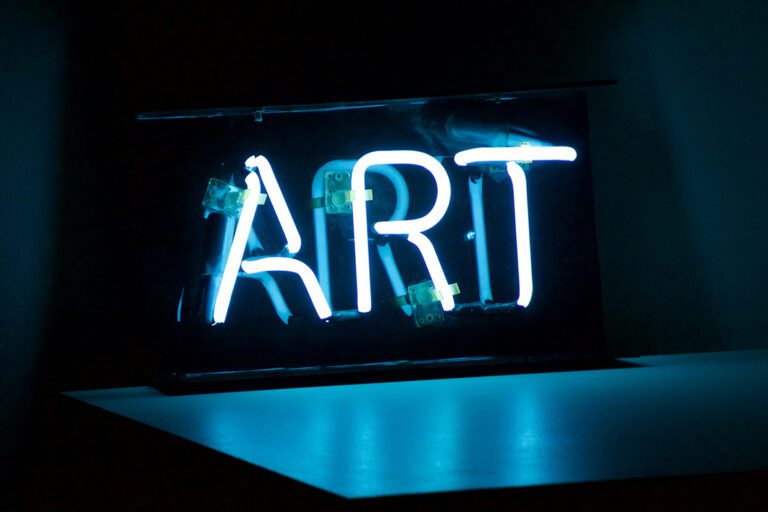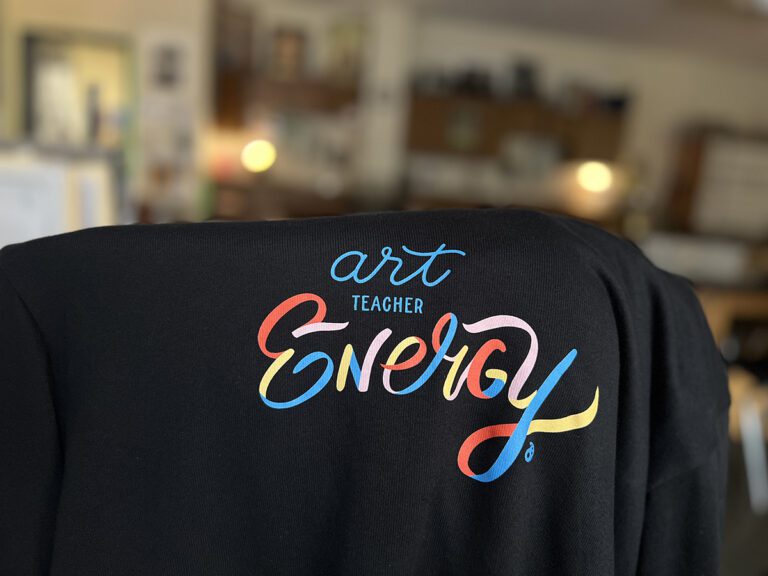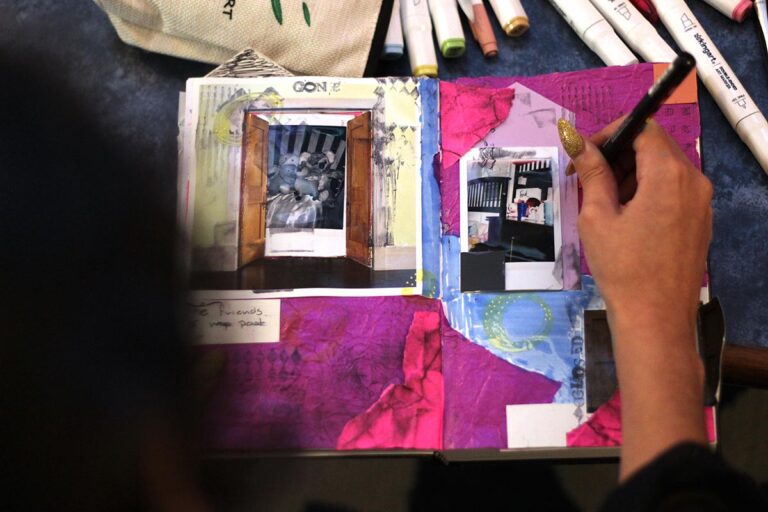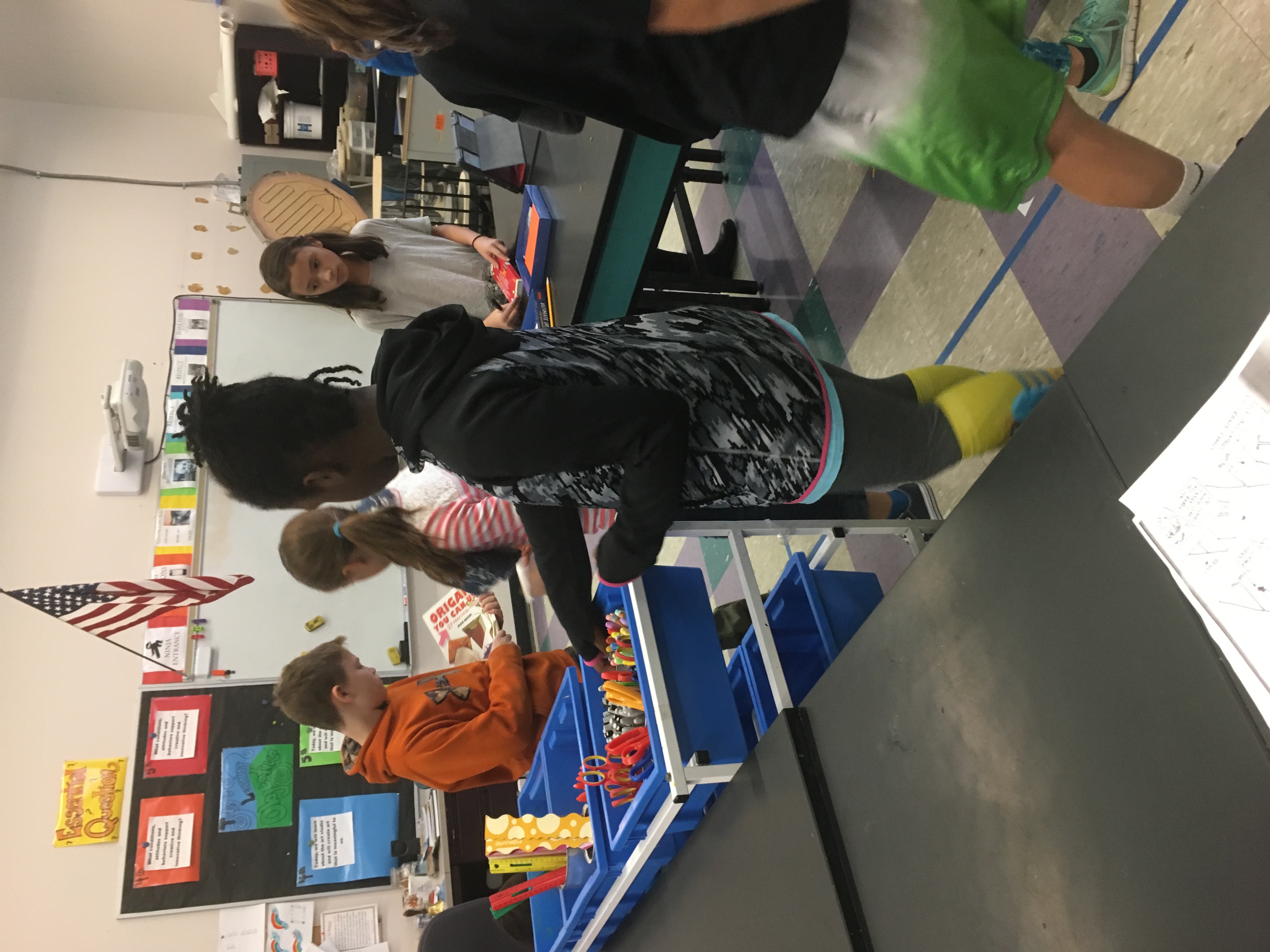
Teaching good studio habits is a huge part of TAB philosophy. Artists need to know how to clean up after themselves! In a choice-based classroom, many different stations are being cleaned up at once. More structured cleanup methods don’t always fit the bill.
I want to share some tips and tricks I have collected over the years that can help all teachers–not just those in a TAB classroom–make cleanup more collaborative, engaging, and efficient. If ideas like these pique your interest, make sure you check out AOE’s Managing the Art Room course. It’s all about the strategies that work best for your own management plan and your own classroom. These are some of the ideas that work best for me:
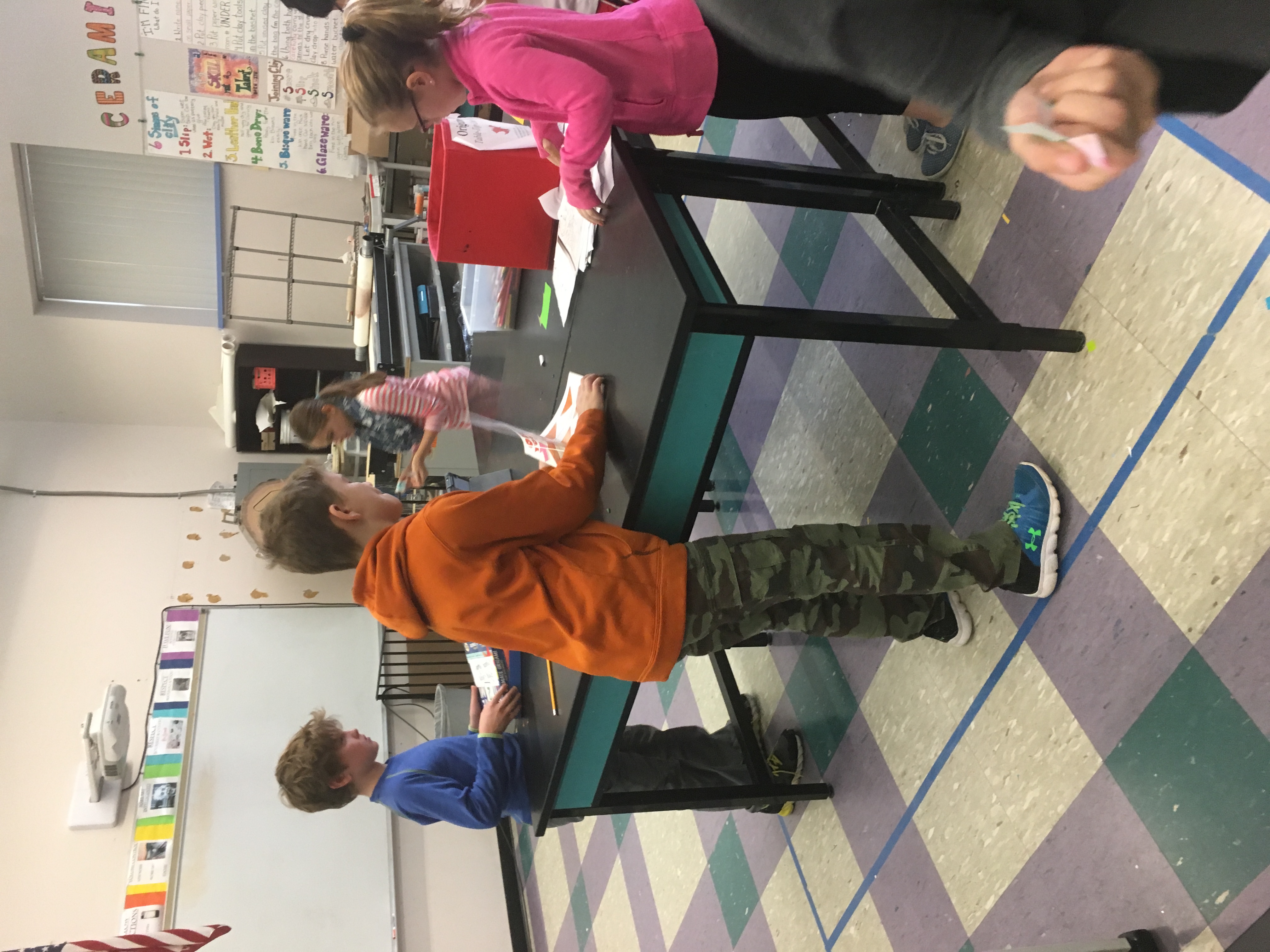
The Dirt Square
My floors are always littered with stuff. Tiny scraps of paper, dirt from shoes, pencil shavings, broken crayons, just to name a few. Last year, I decided to buy a few brooms and allow students who finished cleanup early to help sweep the floor. Instead of sweeping the dirt into a pile, they pushed it back and forth around the room!
Thinking quickly, I pointed to a colored square on the floor and said, “This is the dirt square. Your job is to get as much dirt in this square as possible before the end of cleanup. Then you can pick it up in the dust pan.” I demonstrated how to use the brooms to bring dirt from around the room to that square and The Dirt Square was born!
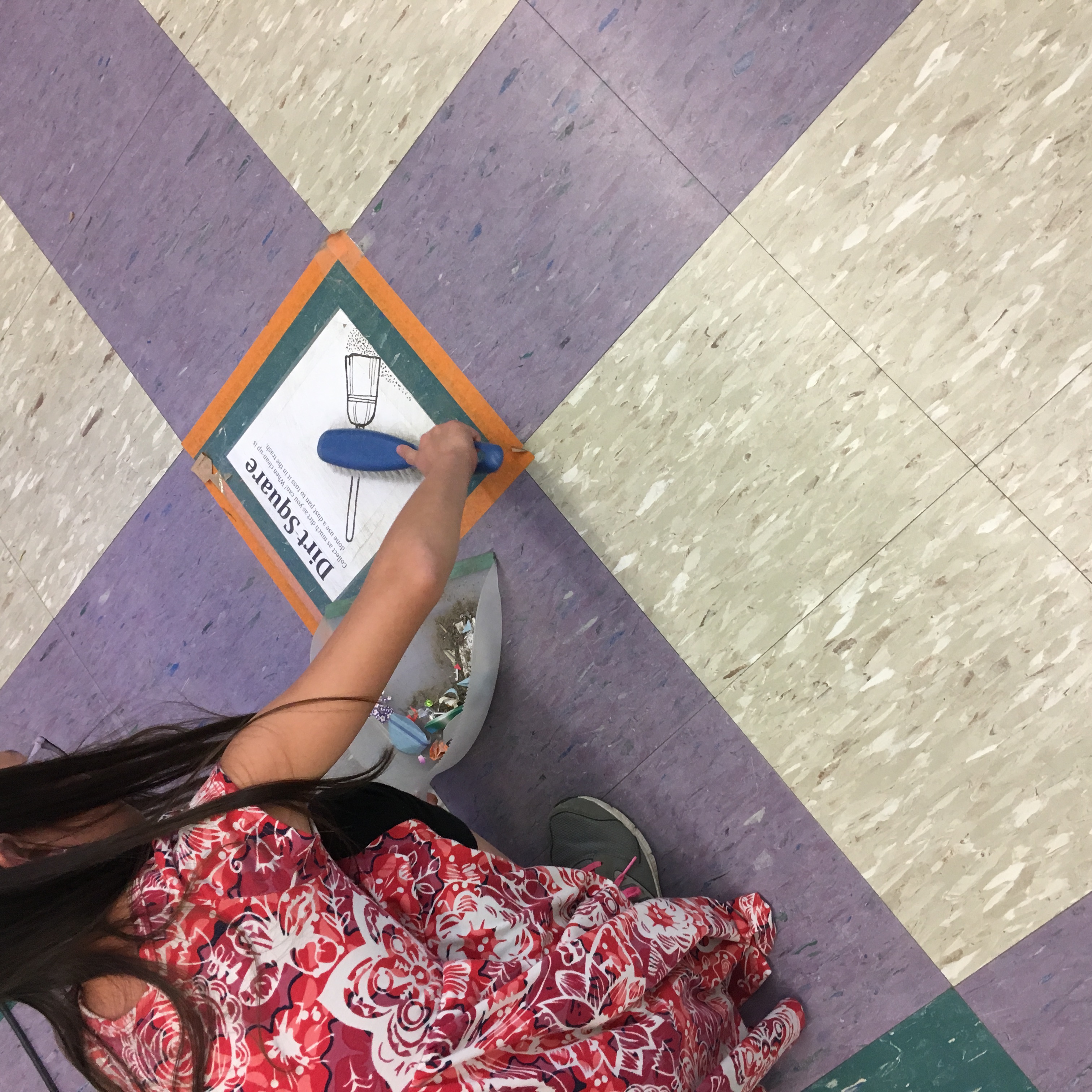
Not only does this teach students a valuable skill, it also gamifies the task. When you make any task a challenge or a game, it makes it more fun for kids and something they are more likely to remember every week when they come to class.
The Secret Supply
Another way to gamify cleanup is to implement The Secret Supply. The Secret Supply can be any supply that you have chosen and when it is put away correctly, the person who cleaned it up is the Secret Supply Finder. The Secret Supply Finder can receive a point in your classroom management system or be allowed to line up first.
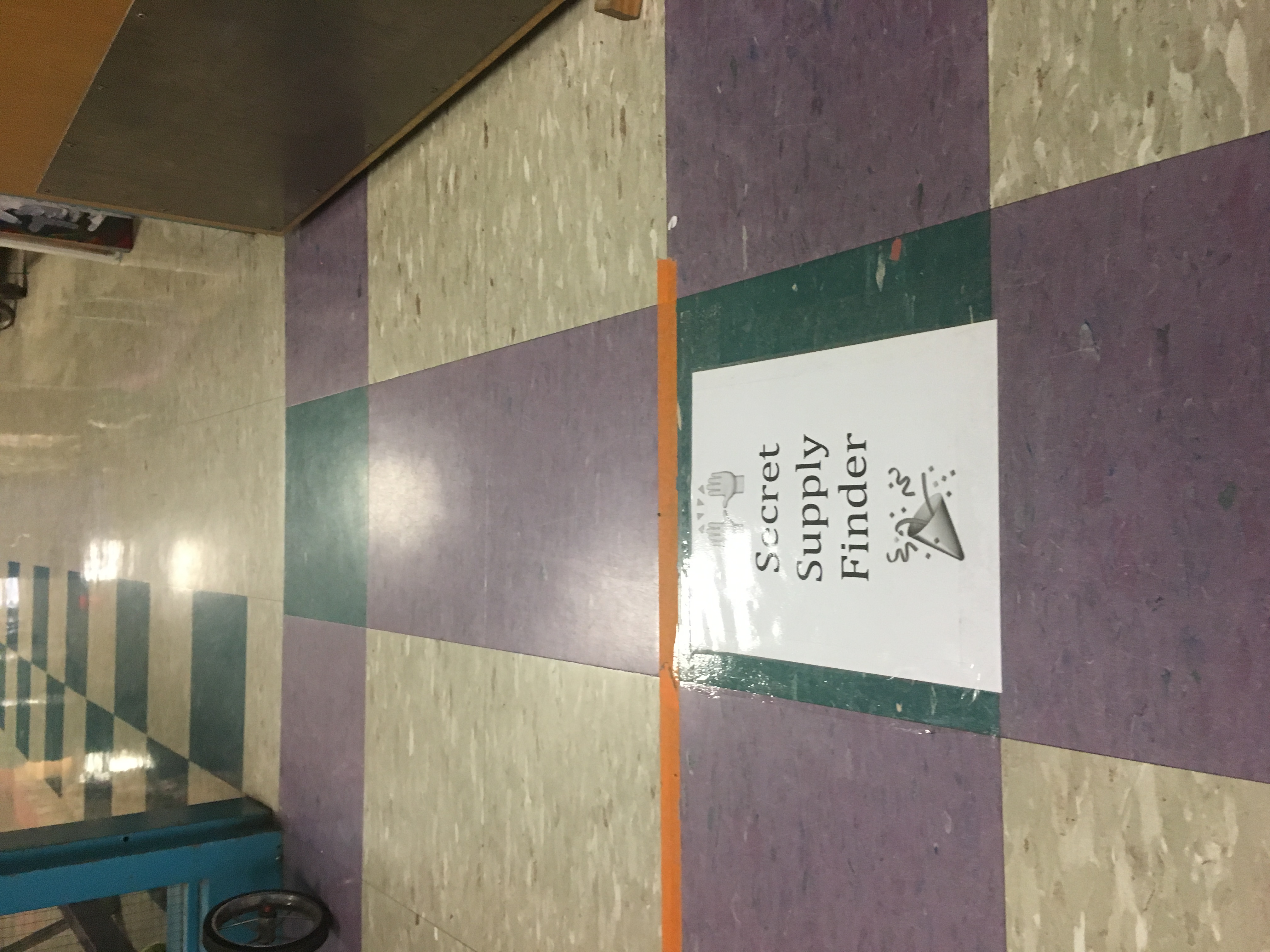
In my classroom, it’s not so much the prize of being allowed to line up first, but the challenge of the game that gets kids excited.
Make sure when you explain the game you tell students, “You can’t ask what The Secret Supply is and you don’t have to tell me if you think you put it away. I am SECRETLY watching and at the end of cleanup, I will tell you exactly what The Secret Supply is and who found it. In fact, if you ask me questions about The Secret Supply, it magically changes to something new. “
The Secret Supply can be an eraser on the floor, a pencil in the marker bin, or my personal favorite, a piece of paper in the trash can instead of the recycling bin. Use The Secret Supply to point out areas of the classroom that could use a little extra love, and give kids hints if it’s a particularly tricky one.
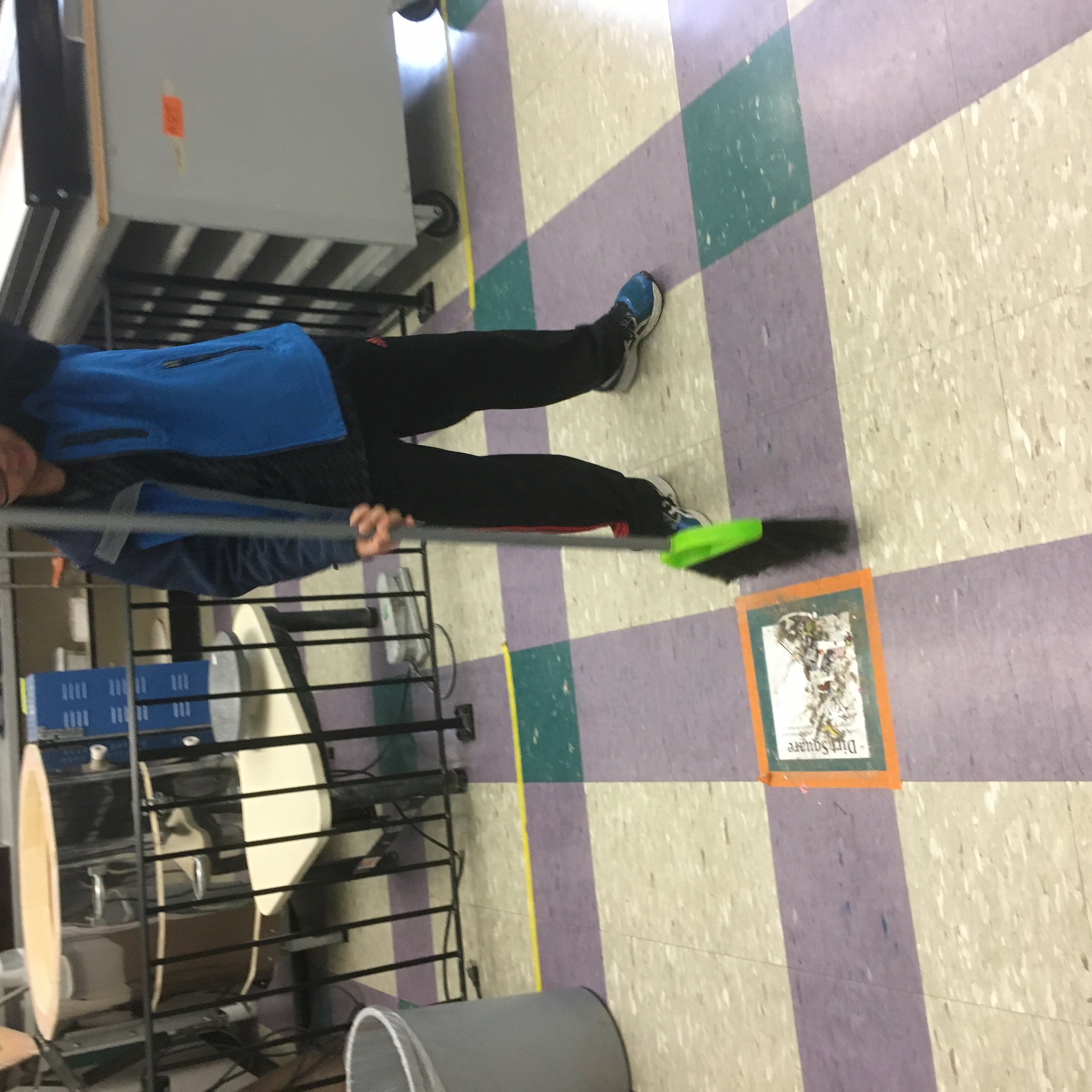
The Take Home Table
In a TAB classroom, students work on projects at different paces. While some students are storing artwork to continue working on the next week, others are ready to bring work home. To prevent students from being distracted by their finished work, I have designated a table in my classroom as The Take Home Table. When the cleanup bell rings, students have 30 seconds to put their work on The Take Home Table to go home, or it can’t leave the art room.
This simple trick leaves hands empty to clean up and prevents finished work from being ruined by a spilled cup of water or a distracted student.
Ask Three Before Me
This one is an oldie but a goodie! When a student asks you a question such as, “Where do pencils go?” or, “Where do I put my work?” respond, “Ask three before me.”
To get started, make a sign, a hat, or even a button with the words “Ask Three Before Me” on it. Then, explain that while there is only one art teacher, there are 20+ other art room experts in the classroom! When students have a question they know other artists might know the answer to, ask three other artists before you ask the teacher. If three other artists don’t know the answer, this is something we may need to revisit as a class.
After a while, you’ll start to notice a more collaborative and independent vibe to your cleanup and you’ll begin having to invoke “Ask three Before Me” less and less often.
Now, I’ll be real. Cleanup in my room isn’t always perfect and it’s not always smooth. Another great part of the TAB philosophy is that centers are only kept open if students take care of them. This natural consequence (which is similar to what happens when you don’t take care of your own studio as an artist), along with these tips and tricks, keeps cleanup running smoothly.
Would you try any of these cleanup tricks in your classroom? If you already do, how do they work for you?
Do you have any go-to cleanup tricks to share that work well for you?
Magazine articles and podcasts are opinions of professional education contributors and do not necessarily represent the position of the Art of Education University (AOEU) or its academic offerings. Contributors use terms in the way they are most often talked about in the scope of their educational experiences.
